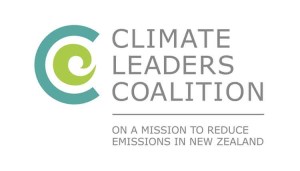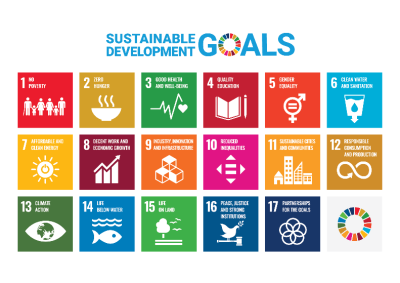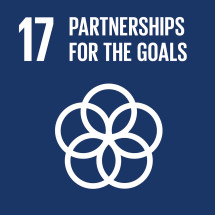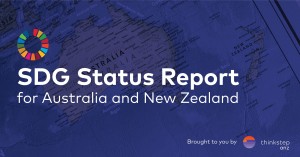Supply chains have become a focal point of conversations around a company’s performance. Organisations and their stakeholders now want assurances that their values are reflected throughout the supply chain.
A responsible procurement framework helps companies to mobilise positive change through the different tiers of their supply chain. By prioritising suppliers that align with their environmental and social values, they can encourage a much wider range of companies to shift the dial on those issues. This means working with companies that have similar values and are willing to put in the work to comply with the preferred supplier requirements — not just companies that already meet the requirements.
We look at the companies putting responsible procurement frameworks into action and the three core components required for success: stakeholder engagement, screening, and supplier code of conduct.
Stakeholder engagement: Understand the priorities of your company and stakeholders
 The first step is to understand the areas that are most important to your organisation. A materiality assessment can help you identify and prioritise the issues that are most important to your organisation, based on feedback from a wide range of internal and external stakeholders.
The first step is to understand the areas that are most important to your organisation. A materiality assessment can help you identify and prioritise the issues that are most important to your organisation, based on feedback from a wide range of internal and external stakeholders.
If you are not able to undertake a full materiality process right now, it doesn’t mean you have to miss out on the benefits of stakeholder engagement. You can still engage with your internal and external stakeholders on a smaller scale to understand the high priority areas and market expectations for your organisation. This can feed into your responsible procurement framework and the overall process for supplier selection.
To determine priority areas related to their sustainability values, premium lighting solutions company, Eagle Lighting (formerly known locally as Fagerhult NZ) looked to the UN Sustainable Development Goals framework for inspiration. An SDG workshop run by thinkstep-anz brought together representatives from different areas of the company to consider the Goals that are most important to Eagle Lighting across a range of areas. Eagle Lighting followed this up with an external stakeholder engagement process, allowing the company to assess their sustainability priorities through a customer-focused lens.
Influence your supply chain
Every company with a supply chain has potential to create positive change. The bigger the company, the bigger the ripple effect. Before you start the screening process for suppliers, identify and prioritise the criteria you will use based on the findings of the stakeholder engagement process.
A supplier questionnaire can help to make evidence-based decisions that consider each supplier’s performance according to your organisation’s specific criteria. These include essential criteria such as price and quality, along with organisational values such as specific environmental and social issues.
Supplier code of conduct: Seal it in writing
 A supplier code of conduct formalises what is required, expected, and preferred from an organisation’s supply chain. In New Zealand, leading companies like New Zealand Post and Air New Zealand have built in criteria around environmental and social standards that they expect their suppliers to meet. The wording should reflect how different criteria are ranked within your organisation — what are the non-negotiable requirements, the expected standards, and the nice-to-have criteria for your suppliers?
A supplier code of conduct formalises what is required, expected, and preferred from an organisation’s supply chain. In New Zealand, leading companies like New Zealand Post and Air New Zealand have built in criteria around environmental and social standards that they expect their suppliers to meet. The wording should reflect how different criteria are ranked within your organisation — what are the non-negotiable requirements, the expected standards, and the nice-to-have criteria for your suppliers?
Whether your organisational values focus on addressing issues such as labour standards (SDG 8 & 12), gender equality in the workforce (SDG 5), environmental sustainability (SDGs 7-14, 15), or climate change (SDG 13), a supplier code of conduct makes your priorities clear to all interested parties.
While some companies give preference to suppliers with environmentally and socially sound practices, others like Australian logistics company Brambles (better known in NZ under its brand CHEP), will only work with suppliers that agree to comply with all relevant aspects of their Code of Conduct and Supplier Policy.
Lachlan Feggans from Brambles explained that the company “achieved 100% sustainable sourcing right around the globe in 2020” at thinkstep-anz’s SDG Panel Discussion in April. Their policy was a gamechanger in the international forestry markets as it helped to shift the industry towards more sustainable practices. When companies with sizeable supply chains put their expectations into writing, they are essentially shifting the perception of these issues from being add-ons to being requirements.
The benefits for socially and environmentally responsible organisations
While larger companies have more capacity to influence, small to medium enterprises (SMEs) can stand out among competitors by driving responsible procurement practices within their own organisations. SMEs that have well established environmental and social policies, or are in the process of finalising them, will be well placed for contracts with Government and large companies.
The New Zealand Government’s procurement rules, which include requirements for agencies to incorporate or consider priority outcomes, apply to all government departments, police and defence forces, and most crown entities for procurement that is worth more than $100,000. These priority outcomes include increasing local businesses’ access to government procurement, improving conditions for workers in government contracts, and supporting waste reduction and the transition to a zero net emissions economy.
 Larger companies also take procurement seriously, choosing suppliers that align with their values and help them to avoid operational and reputational risk. These companies may also need to meet commitments of member organisations. Examples of this include the Sustainable Business Council (SBC) which requires all members to have a sustainable procurement process in place within 3 years of joining, and the Climate Leaders Coalition (CLC) which requires signatories to work with suppliers to reduce emissions.
Larger companies also take procurement seriously, choosing suppliers that align with their values and help them to avoid operational and reputational risk. These companies may also need to meet commitments of member organisations. Examples of this include the Sustainable Business Council (SBC) which requires all members to have a sustainable procurement process in place within 3 years of joining, and the Climate Leaders Coalition (CLC) which requires signatories to work with suppliers to reduce emissions.
While climbing the preferred supplier list is a major drawcard on its own, companies that commit to sustainable practices beyond compliance can reap a host of additional benefits.
These benefits include increasing efficiencies, reducing costs, mitigating risks, and growing revenue — all while becoming a company that better aligns with the expectations of its staff, clients, and customers.
Let the SDGs guide procurement decisions
The SDGs are becoming a standard part of reporting for listed companies in Australia and New Zealand.
Out of the top 100 listed companies in Australia and New Zealand, 56 are reporting on the SDGs in thinkstep-anz’s SDG Status Report.
However, the SDGs are not only for large companies — the 17 Goals provide a useful framework for companies of all sizes to define and clearly communicate their values, priorities, targets, and measure their progress.
Eagle Lighting’s three-step responsible procurement framework includes a supplier questionnaire, code of conduct, and screening process. Following on from their responsible procurement process, Eagle Lighting will give preference to suppliers who prioritise similar goals, such as investing in renewable energy and energy-efficient production (SDG 7), supporting environmentally and socially responsible practices (SDG 12), and actively promote diversity, including, human rights, and community investment in their business and supply chain (SDG 10).
Responsible procurement is for everyone
 Companies like Eagle Lighting are on a mission to prove that doing right by the planet and people will ultimately be good for business. However, it is not a goal that can be achieved by any single company on its own. An organisation’s supply chain provides one of the biggest opportunities to drive this change beyond its own activities.
Companies like Eagle Lighting are on a mission to prove that doing right by the planet and people will ultimately be good for business. However, it is not a goal that can be achieved by any single company on its own. An organisation’s supply chain provides one of the biggest opportunities to drive this change beyond its own activities.
Building meaningful partnerships for the goals (SDG 17) will bring a larger group of companies along for the ride and will also help them to reach their sustainability goals faster.
A responsible procurement framework guides and formalises this process. While the ripple effect will be felt most strongly by the top tier suppliers, this will soon extend to their suppliers, and it will go on to catalyse a supply chain transformation. Focusing on environmentally and socially responsible practices alongside profit, will help potential suppliers to remain attractive in a market that is increasingly value driven.
By Barbara Nebel and Femi Perumbally
This article was first published in NZ Manufacturer magazine, August 2021.
